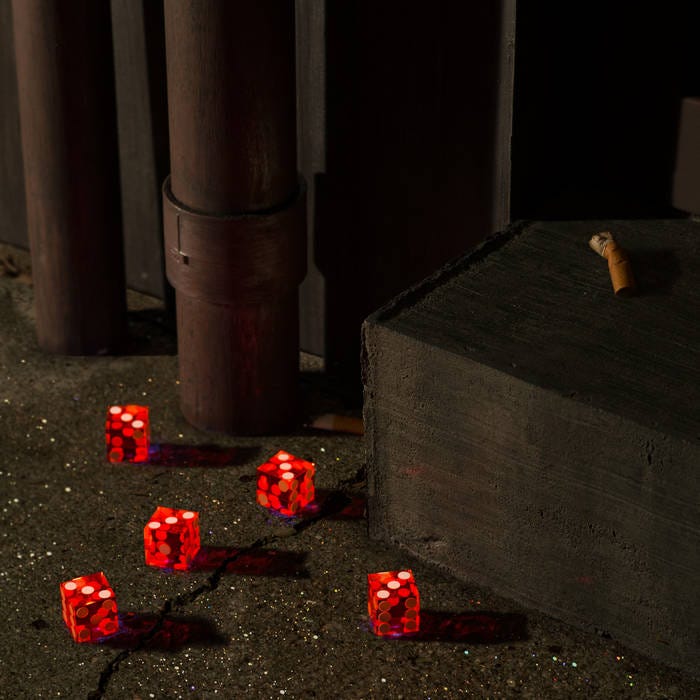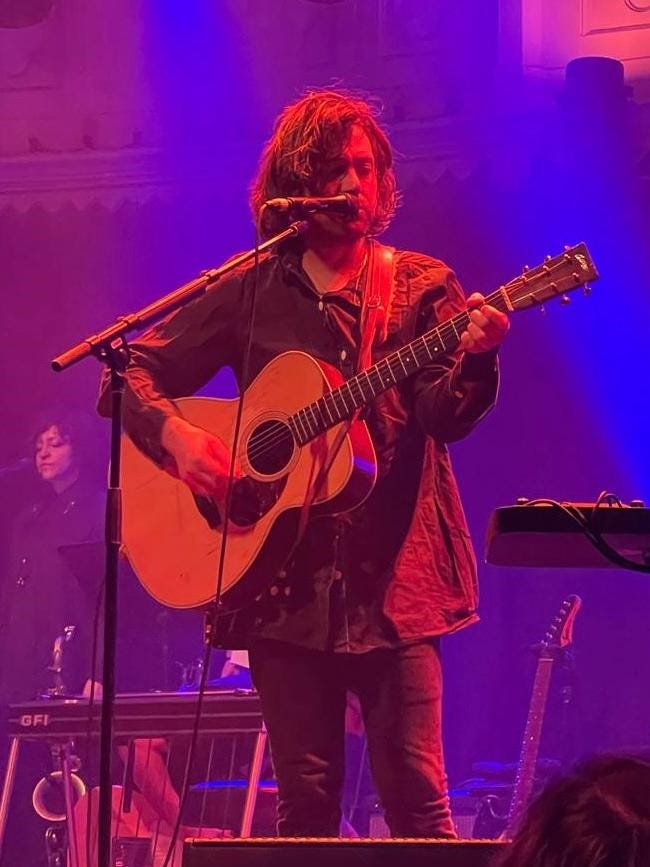In 1975 - on July 9th, the very day I turned 11, in faraway South Africa - Bas Jan Ader set off alone, from Chatham, Massachusetts, intending to cross the Atlantic Ocean in a small sailing boat named Ocean Wave. The Dutch conceptual artist, photographer and filmmaker was embarking on the trip as the middle part of a triptych called “In Search of the Miraculous” that had begun with “In Search of the Miraculous (One Night in Los Angeles) (1973), a series of photographs (taken by his wife, Mary Sue Andersen) documenting Ader’s walk into a Los Angeles night, that took him from the city’s hills down to the sea.
But, nearly a year after his departure, in April 1976, a Spanish fishing crew found Ader’s boat off the Irish coast, with no trace of the artist’s body. There was to be no performance of sea shanties at the Groninger Museum in the Netherlands that Ader had intended to stage as a mirror of the one he had organised to be performed at LA’s Claire Copley Gallery, where his In Search of the Miraculous photographs were on view before he departed on his sailboat. What was left when Ader disappeared at sea was a body of work that includes a series of films that used gravity as a medium - Fall 1 (1970), a short film and series of still photographs of Ader rolling off the roof of his Los Angeles home and falling into the bushes below, and Fall 2, which captured the artist riding his bike into an Amsterdam canal. Ader’s output also included the extraordinary multimedia work, “I'm too sad to tell you”, which consists of a three-minute black-and-white silent film, still photographs and a postcard, with Ader as the subject, crying inconsolably for reasons we’re never told, the title of the work inevitably invoking a contrast to the intimate, detailed sharing of trauma of all kinds that floods the current moment.
Over the past few years, I have been thinking a great deal about Ader’s life and disappearance at sea - in his biographies online, his death date is noted as 1975, Atlantic Ocean - because of a project that I am part of called Requiem for the Impossible that is produced by affect lab, an Amsterdam-based creative studio and research practice. An interactive musical performance, featuring music by Lucy Kruger and Liú Mottes and the poetry of my partner, Jay Savage as well as vocal and sound samples from ocean crossings, Requiem for the Impossible narrates the disappearance of my brother-in-law, Anthony Murray in the Indian Ocean (death date 2015, Indian Ocean) as a way to talk about ambiguous loss - a complex form of grief that occurs when there is no certainty around why or where or how a loved one died, or whether they are even dead at all. Vanishing at sea isn’t the only similarity between Ader and Anthony and his two crew: in a cruel twist, after its discovery Ader’s Ocean Wave was brought to the Spanish port, La Coruña for investigation but, days later, was stolen, denying his wife and brother the chance to inspect the boat and perhaps find some clues as to how the artist died. We were also denied the chance to inspect the hull of the catamaran that Anthony and his crew were delivering - and which, miraculously, appeared off the coast of South Africa after travelling thousands of miles from the middle of the Indian Ocean - when it was lost in tow. (You can read more about this here.)
Listening to Bright Eyes’ first new album in four years, it’s clear that the band’s main songwriter, Conor Oberst, has also had Ader on his mind. A few tracks into Five Dice, All Threes is a song titled “Bas Jan Ader” that is a waypoint into this musically complex, lyrically dense record which, on multiple listens, reveals itself as one of the best issued by Oberst with his bandmates Mike Mogis and Nate Walcott. Set to a jaunty banjo that is elevating in the way of the sea shanty that inspired the name of Ader’s boat (“A Life on the Ocean Wave”), the gut punch comes with the song’s repeated refrain,
Well, it takes a lot of nerve
To live on planet earth
It was the best of times, it was the worst of times, it was the worst
Later, Oberst makes direct reference to Ader’s works, Searching for the Miraculous and 'I'm too sad to tell you' in these lines,
Shamrock on a jacket, dropped into a casket
Baby, that’s no way to die
I never thought I'd see 45
How is it that I'm still alive?
In search of that miraculous mystery
Crying on a movie screen
Leaving the harbour with Bas Jan Ader
Sailing out to sea
Through the very act of creating music, Five Dice, All Threes is Oberst’s search for the miraculous, in between the everyday detritus of living that includes intimate and big-screen events, nagging doubt and even self loathing. The quest for the transformative or the transcendent has always been present in Oberst’s music, across his work with Bright Eyes and his solo records. And even when the discovery is that pain, isolation, and existential terror exists in the world, the sublime arrives in songs anchored in love, frequently of the messy kind (as in “Lua”off the masterpiece album, I’m Wide Awake, It’s Morning), and some redemptive communion with others.
On Five Dice, All Threes, however, there feels like an extra weightedness to the words that sweeps the material into inkier, blacker territory. “El Capitan” describes a familiar Bright Eyes’ scene - a girl and a boy steal off to watch or experience something together, here climbers on the vertical granite rock in Yosemite National Park. But disintegration is not far away and the song ends on the bleakest of notes:
So you're playing your Nintendo, spun out like a gramophone
Living in a basement, sleeping down there all alone
The conditions were perfect, more perfect for a perfect storm
Then they found you in the morning hanging from an extension cord
The world is on fire, California is a crucible
We're running out of water, they already stole all the gold
You kept kissing me like Judas, your betrayal was apropos
You said I'm washed up and that's what I get for growing old
Is it any wonder Oberst wants to sail out to sea with Bas Jan Ader?
“El Capitan” is not the only reference to death and suicide on the album - “Where you saw a rope swing, I saw a noose,” sings Oberst on “Real Feel 105°” and there’s a song titled “Tiny Suicides”. But the latter also glints with hope in the lines, “Someday we all die/Why give into these tiny suicides?” and, alongside the desire to sail away, there is also a sense that sometimes you just have to move with what is, towards your destiny. As Oberst has said about the album’s lead single “Bells and Whistles”, “This is a song about the many little details in life that can seem insignificant or frivolous or temporary at the time, but eventually end up forming your destiny. And it’s also kind of a whistle while you work scenario.”
Like all Bright Eyes’ records, there are moments of beauty aplenty to catch hold of on Five Dice, All Threes. Oberst knows how to choose vocal partners (is there a more exquisite moment on a record than Emmylou Harris’s vocals on “We Are Nowhere And It’s Now”, as Jay Savage wrote about here?) and the guest feature from Cat Power on the waltzing “All Threes” and The National’s Matt Berninger on “The Time I Have Left” (which asks the question, “I would like to ask you the time/Yeah, I would like to ask you the time/I have left”) are quite wonderful. In a sometimes stark counterpoint to the lyrics, the album’s music is also frequently upbeat, rollicking and rolling in a way that makes you want to see songs like “Hate” performed live. In just over a month we were set to head out to the Dutch city of Nijmegen to see Bright Eyes as part of a set of European dates in support of the new album. But late September came news that the band’s 2024 dates are being cancelled because Conor Oberst is needing “treatment and recuperation” for a condition that is exacerbated by excessive singing.
It won’t be the first time that I’ve had to wait patiently to see a band that I always name when asked about my favourite artists. In August 2022, we saw Bright Eyes at Paradiso’s Grote Zaal, a show that COVID had seen postponed from, first, August 2020 and then August 2021. That was a tour in support of 2020’s Down in the Weeds, Where the World Once Was and the most revelatory thing about it was how satisfyingly anarchic Oberst’s performance was, far removed from how he’s always been described - folky, indie, vulnerable, fragile, confessional, emo. We’ve yet to get a formal notification from the venue about the cancellation so I am holding out hope that we might still see Bright Eyes perform a couple of hundred kilometres from Winschoten, the place where Bas Jan Ader was born in 1942.
I leave you with this dear reader.
Bas Jan Ader might not be the only reference to a well-known Dutch person on Five Dice, All Threes. “The body keeps the score /passing out on the floor,” sings Oberst on "Real Feel 105°” and I wonder, of course, if he has read The Body Keeps the Score: Brain, Mind, and Body in the Healing of Trauma by Bessel van der Kolk, the Dutch psychiatrist, author, researcher and educator. In the book, van der Kolk “shows that the terror and isolation at the core of trauma literally reshape both brain and body”. This new addition to Oberst’s musical diary has terror, isolation and trauma leaking into every curiously uplifting and joyous tune.
This is also not the first time Bas Jan Ader has been referenced in contemporary music. The artist is also the inspiration for Bas Jan, a London-based experimental post-punk trio built around the voice and songs of multi-instrumentalist and composer Serafina Steer. Their most recent album is Back To The Swamp featuring the new wave inspired “At The Counter”.
Finally, as much as I would love to share images of Bas Jan Ader’s work in this piece, they are in copyright and represented by Meliksetian Briggs. You can watch the short film embedded at the start of this newsletter that was created for the 57th La Biennale di Venezi when Ader’s work was included in the Viva Arte Viva exhibition in the Arsenale. It is a poignant capturing of the artist preparing his boat for sail.






Such a beautiful, fascinating and layered piece, Diane. I loved it
Loving this new bright eyes, and the article -